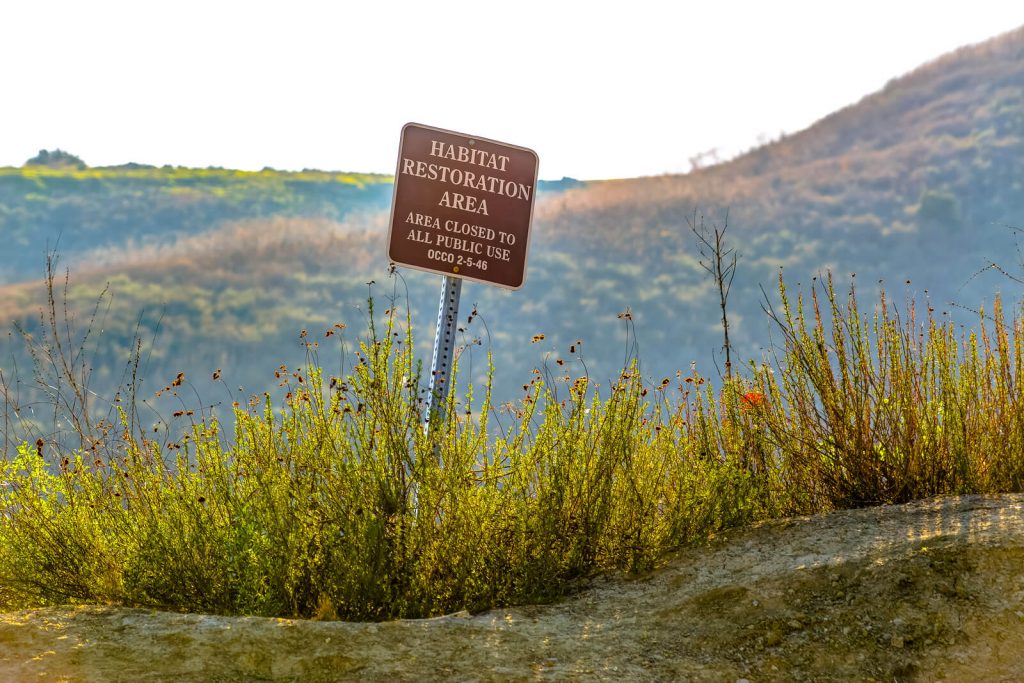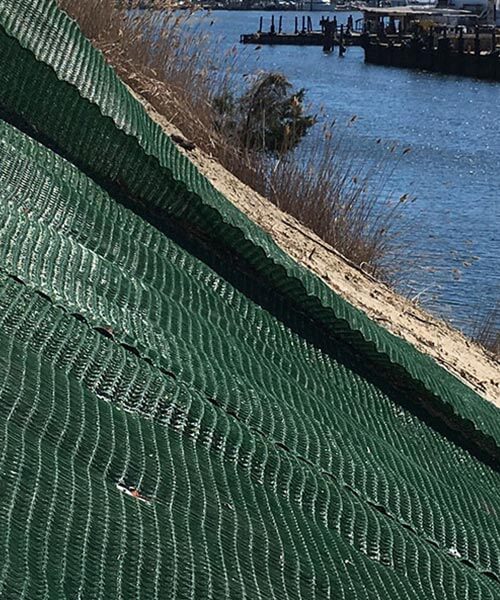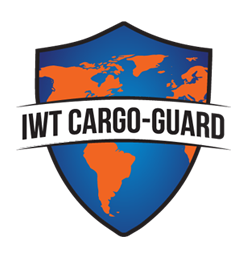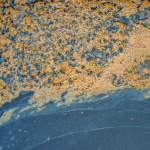Erosion Control Methods for Wetlands Habitat Restoration
As one of the most productive ecosystems in the world, wetlands benefit people, marine life, and wildlife. Different types of wetlands include marshes, swamps, riverbanks, bogs, mangroves, rice fields, and more. Wetlands help to protect and improve the water quality and supply. They also provide a habitat for fish and wildlife, reduce coastal storm damage, and maintain ecosystem productivity. According to a U.S. Fish and Wildlife Service study, there were 221 million acres of wetlands in the lower 48 states in the late 1700s. By 1990, more than half of those wetlands had been destroyed. In 2012, it was determined that 50% of the entire world’s wetlands had been destroyed in the past 100 years. This percentage has only grown since then, making wetlands habitat restoration imperative. Erosion control methods are vital to this restoration.
Why Are Wetlands So Important?
Wetlands have multiple functions which help them protect and improve the environment while enhancing the quality of life for the animals and the people living in it:
- They improve water quality by acting as natural water purifiers. Wetlands filter out sediments and can absorb many pollutants from surface water. This can also improve the quality of groundwater in the area.
- Coastal wetlands help to reduce damage from major storms by reducing flood activity, coastal erosion, and even property damage.
- Wetlands along rivers and streams help with flood control and streamflow maintenance. They absorb energy and store water during storms which helps to reduce the risk of flash floods. The stored water can then be released slowly to aid in a drought period.
- Wetlands act as a natural erosion control method since the vegetation binds the soil together on streambanks.
- Because wetlands provide food for wildlife, they provide a good habitat for many species of amphibians, birds, reptiles, and mammals.
- Marine life such as fish and crab rely on wetlands for food, spawning, nursery grounds, and cover from predators.

What is Wetlands Habitat Restoration?
The National Research Council defines wetlands habitat restoration as the “return of an ecosystem to a close approximation of its condition prior to disturbance”. The restoration process rehabilitates degraded wetlands, or in more severe cases, can actually establish a wetland that was once destroyed. There are a few types of wetlands restoration:
- Enhancement: An enhanced wetland is one that has been changed in order to improve one or more functions of that wetland. Altering site elevations or the proportion of open water is one method of enhancement. Increasing the population of a specific species within the wetland is another. However, it can often decrease the population of other species. The objectives for that wetland determine the specific type of enhancement.
- Creation: This is the creation of a wetland in an area that was not a wetland in the past 100 to 200 years and not directly adjacent to existing wetlands in the area. Creation involves the excavation of uplands soils to elevations which will then support the growth of wetland species by establishing appropriate hydrology.
- Mitigation: This type of restoration essentially makes up for the loss of another wetland. The Clean Water Act states that destroying one wetland requires restoration of another wetland to compensate so there is no loss in the total number of wetlands.
Erosion Control Methods
There are a variety of erosion control methods that can aid in wetlands habitat restoration. The most effective approach is a combination of engineered structures to protect the natural ecosystems from storms and erosion. This allows the ecosystem a better chance to develop and grow stronger than it was before. Erosion control methods for wetlands habitat restoration include:
- Geotextile Tubes: Their use in breakwater applications helps to reduce erosion and protect the shoreline.
- High-Performance Turf Reinforcement Mats: Constructed from high-strength UV stabilized polypropylene fibers, these mats provide permanent armoring for wetlands. They facilitate vegetation growth by allowing surface water to infiltrate the seeds locked in place by the special fibers in the mat.

- Temporary Erosion Control Blankets: Manufactured from natural fibers such as straw or wood excelsior, temporary erosion control blankets provide short-term rainfall protection of slopes. They are also ideal for use as a channel liner in low-risk or low gradient scenarios where vegetation establishes quickly.
Erosion Control Methods to Protect and Restore Wetlands
Every year, the severity and frequency of destructive storms increases. The earth’s natural land buffers wetlands, coastal dunes, barrier islands, and mangroves are disappearing at a rapid rate. IWT Cargo-Guard understands the importance of wetland restoration to our environment. We offer a variety of erosion control products to protect and preserve it for generations to come. Contact us today to discuss your project and how we can work together to protect and strengthen our environment.






Quando você esquecer a senha para bloquear a tela, se você não inserir a senha correta, será difícil desbloquear e obter acesso. Se você achar que seu namorado / namorada suspeita, você pode ter pensado em hackear o telefone Samsung dele para obter mais evidências. Aqui, iremos fornecer-lhe a melhor solução para descobrir a palavra-passe do telemóvel Samsung.
Se você está pensando em usar um aplicativo espião de celular, então você fez a escolha certa.
Your point of view caught my eye and was very interesting. Thanks. I have a question for you.
I don’t think the title of your article matches the content lol. Just kidding, mainly because I had some doubts after reading the article.
Can you be more specific about the content of your article? After reading it, I still have some doubts. Hope you can help me.
Your point of view caught my eye and was very interesting. Thanks. I have a question for you.
It’s a game. Five dollars is free. Try it It’s not an easy game
->-> 카지노사이트.COM
Hello to all, how is everything, I think every one is getting more from this web page, and your views are nice in support of new visitors.
Here is my web blog :: vpn special coupon code 2024
I think the admin of this website is in fact working hard in support of
his site, since here every information is quality based information.
Check out my web site … vpn special coupon code 2024
п»їbest mexican online pharmacies: cheapest mexico drugs – medicine in mexico pharmacies
reputable indian pharmacies http://indiaph24.store/# Online medicine home delivery
indian pharmacy online
http://indiaph24.store/# indian pharmacies safe
mexico drug stores pharmacies: Mexican Pharmacy Online – mexican pharmaceuticals online
purple pharmacy mexico price list [url=https://mexicoph24.life/#]mexico pharmacy[/url] mexican border pharmacies shipping to usa
http://canadaph24.pro/# cheapest pharmacy canada
http://finasteride.store/# order generic propecia without insurance
ciprofloxacin 500 mg tablet price: buy cipro cheap – buy cipro
lisinopril 5 mg brand name [url=http://lisinopril.network/#]zestril generic[/url] lisinopril 20 mg purchase
http://finasteride.store/# cheap propecia without dr prescription
zestril 10 mg cost [url=https://lisinopril.network/#]zestoretic price[/url] zestril 20 mg tablet
http://nolvadex.life/# nolvadex gynecomastia
cheap propecia without rx [url=http://finasteride.store/#]cost cheap propecia without insurance[/url] propecia order
cipro pharmacy: purchase cipro – cipro
https://cytotec.club/# buy misoprostol over the counter
lisinopril 20 mg purchase [url=http://lisinopril.network/#]rx 535 lisinopril 40 mg[/url] lisinopril
http://finasteride.store/# generic propecia price
cytotec buy online usa [url=http://cytotec.club/#]order cytotec online[/url] buy cytotec
https://finasteride.store/# cost of generic propecia without dr prescription
tamoxifen men: nolvadex during cycle – tamoxifen 20 mg tablet
benefits of tamoxifen [url=http://nolvadex.life/#]nolvadex only pct[/url] clomid nolvadex
http://finasteride.store/# cost of generic propecia without dr prescription
https://cytotec.club/# cytotec abortion pill
purchase cipro: ciprofloxacin generic price – cipro pharmacy
prinivil 10 mg [url=http://lisinopril.network/#]lisinopril 20 mg prices[/url] zestoretic 20
https://cytotec.club/# cytotec buy online usa
alternative to tamoxifen [url=https://nolvadex.life/#]nolvadex gynecomastia[/url] tamoxifen hot flashes
http://lisinopril.network/# lisinopril metoprolol
arimidex vs tamoxifen bodybuilding: tamoxifen skin changes – tamoxifen hair loss
Misoprostol 200 mg buy online [url=https://cytotec.club/#]buy cytotec pills[/url] Abortion pills online
http://ciprofloxacin.tech/# purchase cipro
purchase lisinopril online: lisinopril 5 mg for sale – lisinopril 5mg tab
aromatase inhibitors tamoxifen [url=https://nolvadex.life/#]tamoxifen side effects forum[/url] tamoxifen lawsuit
http://ciprofloxacin.tech/# buy cipro online without prescription
https://finasteride.store/# buying cheap propecia without a prescription
zestril 20 mg price canadian pharmacy [url=https://lisinopril.network/#]lisinopril 40 mg brand name in india[/url] prinivil price
buy ciprofloxacin over the counter: buy cipro online without prescription – cipro online no prescription in the usa
http://finasteride.store/# buying generic propecia price
п»їcipro generic [url=https://ciprofloxacin.tech/#]cipro online no prescription in the usa[/url] cipro online no prescription in the usa
alternatives to tamoxifen [url=http://nolvadex.life/#]tamoxifen premenopausal[/url] tamoxifen and osteoporosis
https://ciprofloxacin.tech/# where can i buy cipro online
lisinopril 10mg tablets price: benicar lisinopril – lisinopril 10
https://lisinopril.network/# lisinopril tabs
get generic propecia price [url=https://finasteride.store/#]buying cheap propecia online[/url] propecia brand name
https://cytotec.club/# Cytotec 200mcg price
generic tamoxifen: tamoxifen skin changes – tamoxifen bone density
cytotec buy online usa [url=http://cytotec.club/#]buy cytotec online[/url] Cytotec 200mcg price
https://nolvadex.life/# effexor and tamoxifen
ciprofloxacin 500mg buy online [url=http://ciprofloxacin.tech/#]п»їcipro generic[/url] buy cipro
https://ciprofloxacin.tech/# purchase cipro
tamoxifen cancer: buy nolvadex online – tamoxifen cancer
cost of tamoxifen [url=https://nolvadex.life/#]tamoxifen citrate pct[/url] tamoxifen hair loss
http://cytotec.club/# cytotec buy online usa
http://ciprofloxacin.tech/# cipro ciprofloxacin
order propecia without dr prescription: cost cheap propecia online – get generic propecia without dr prescription
buy propecia pills [url=http://finasteride.store/#]cost of propecia prices[/url] buy propecia without dr prescription
https://cialist.pro/# Buy Tadalafil 10mg
Kamagra tablets: kamagra – sildenafil oral jelly 100mg kamagra
buy Levitra over the counter [url=https://levitrav.store/#]Buy generic Levitra online[/url] Levitra generic best price
Buy Cenforce 100mg Online: cheapest cenforce – order cenforce
http://cialist.pro/# Buy Tadalafil 20mg
https://levitrav.store/# Levitra online USA fast
Buy Cenforce 100mg Online: Cenforce 150 mg online – cheapest cenforce
buy Viagra over the counter [url=https://viagras.online/#]Buy Viagra online cheap[/url] Generic Viagra online
https://viagras.online/# Viagra tablet online
п»їkamagra [url=https://kamagra.win/#]buy kamagra online[/url] Kamagra 100mg price
Cenforce 100mg tablets for sale: cheapest cenforce – cheapest cenforce
https://cenforce.pro/# cheapest cenforce
Sildenafil 100mg price [url=http://viagras.online/#]Buy Viagra online cheap[/url] sildenafil over the counter
sildenafil online: Buy Viagra online cheap – sildenafil 50 mg price
Buy generic Levitra online: Levitra generic price – Vardenafil buy online
https://viagras.online/# Viagra online price
http://cialist.pro/# Cialis 20mg price in USA
Levitra generic best price [url=https://levitrav.store/#]Buy generic Levitra online[/url] п»їLevitra price
buy Viagra online: viagra canada – sildenafil 50 mg price
https://cenforce.pro/# order cenforce
Viagra online price [url=http://viagras.online/#]Buy generic 100mg Viagra online[/url] Viagra Tablet price
Kamagra 100mg: kamagra pills – buy Kamagra
https://pharmmexico.online/# reputable mexican pharmacies online
mexico pharmacy: mexican online pharmacies prescription drugs – mexican pharmacy
canada pharmacy 24h: canadian pharmacy – canada rx pharmacy
indian pharmacy online [url=http://pharmindia.online/#]buy prescription drugs from india[/url] buy medicines online in india
http://pharmworld.store/# canadian pharmacy no prescription
best website to buy prescription drugs: no prescription drugs – buying prescription medications online
http://pharmcanada.shop/# my canadian pharmacy
pharmacy coupons: pharm world store – cheapest pharmacy to fill prescriptions without insurance
cheapest pharmacy for prescriptions without insurance [url=https://pharmworld.store/#]online pharmacy[/url] canadian pharmacy world coupon code
real canadian pharmacy [url=http://pharmcanada.shop/#]cheap canadian pharmacy online[/url] buying drugs from canada
https://pharmmexico.online/# mexican mail order pharmacies
mexican pharmacy: mexican mail order pharmacies – mexico drug stores pharmacies
canadian pharmacy: canadian pharmacy ratings – canadian pharmacy oxycodone
overseas pharmacy no prescription [url=http://pharmworld.store/#]pharm world[/url] online pharmacy discount code
http://pharmnoprescription.icu/# online medicine without prescription
india pharmacy: cheapest online pharmacy india – indian pharmacy online
reputable canadian online pharmacies: canadian pharmacy no rx needed – canada drugs
mexican pharmacy [url=https://pharmmexico.online/#]mexico pharmacies prescription drugs[/url] reputable mexican pharmacies online
https://pharmindia.online/# india online pharmacy
indian pharmacy paypal: reputable indian online pharmacy – mail order pharmacy india
canadian pharmacy without prescription: pharm world store – cheapest prescription pharmacy
online shopping pharmacy india: indian pharmacy – online shopping pharmacy india
https://pharmindia.online/# buy medicines online in india
indian pharmacies safe [url=http://pharmindia.online/#]indian pharmacy paypal[/url] pharmacy website india
buy generic doxycycline [url=http://doxycyclinea.online/#]doxycycline generic[/url] buy doxycycline monohydrate
buy neurontin 100 mg canada: neurontin over the counter – cost of neurontin 800 mg
https://prednisoned.online/# where to buy prednisone uk
amoxicillin 500 mg purchase without prescription: amoxicillin 500 mg tablet price – amoxicillin 500mg capsules antibiotic
zithromax order online uk: cheap zithromax pills – zithromax for sale online
buy cheap zithromax online [url=https://zithromaxa.store/#]zithromax for sale cheap[/url] how much is zithromax 250 mg
400 mg prednisone: prednisone 10mg tabs – buy prednisone online india
can you buy zithromax over the counter in australia: how to get zithromax – buy zithromax online fast shipping
neurontin 300mg capsule: neurontin online – neurontin 600 mg price
zithromax 500 mg lowest price drugstore online: how much is zithromax 250 mg – zithromax 250 mg pill
https://amoxila.pro/# amoxicillin 500 mg online
zithromax online: zithromax for sale usa – zithromax 250 mg
price of doxycycline [url=http://doxycyclinea.online/#]doxycycline generic[/url] doxycycline monohydrate
https://zithromaxa.store/# zithromax 600 mg tablets
average cost of generic zithromax: how to get zithromax over the counter – zithromax cost australia
prednisone 2.5 mg tab [url=https://prednisoned.online/#]purchase prednisone 10mg[/url] prednisone oral
doxy 200: buy doxycycline hyclate 100mg without a rx – doxycycline 100mg price
https://amoxila.pro/# amoxacillian without a percription
can you buy zithromax over the counter: can you buy zithromax online – cheap zithromax pills
online doxycycline: doxycycline 100mg online – doxycycline monohydrate
buy prednisone tablets online [url=https://prednisoned.online/#]buy prednisone online uk[/url] prednisone 20mg buy online
http://zithromaxa.store/# zithromax prescription online
buy generic doxycycline: doxycycline hyc 100mg – doxycycline 100mg price
buy zithromax online australia [url=http://zithromaxa.store/#]buy zithromax no prescription[/url] generic zithromax online paypal
http://amoxila.pro/# amoxicillin 500 mg cost
zithromax 1000 mg online: zithromax 600 mg tablets – zithromax without prescription
generic doxycycline [url=https://doxycyclinea.online/#]doxycycline 100mg dogs[/url] price of doxycycline
order doxycycline 100mg without prescription: doxycycline mono – buy doxycycline for dogs
buy doxycycline hyclate 100mg without a rx: where to purchase doxycycline – buy doxycycline online without prescription
https://zithromaxa.store/# zithromax buy
amoxicillin 500 coupon: amoxicillin 875 mg tablet – amoxicillin 500mg no prescription
gabapentin generic [url=http://gabapentinneurontin.pro/#]neurontin price[/url] neurontin 300
https://gabapentinneurontin.pro/# neurontin 400 mg capsules
doxycycline 100mg online: doxycycline 50 mg – doxycycline 50 mg
amoxicillin 750 mg price [url=https://amoxila.pro/#]where can i buy amoxicillin over the counter[/url] can you buy amoxicillin over the counter in canada
amoxicillin 500mg pill: buy cheap amoxicillin – amoxicillin 500 mg capsule
neurontin 400mg: where can i buy neurontin from canada – drug neurontin 200 mg
http://doxycyclinea.online/# doxycycline hydrochloride 100mg
amoxicillin 500 tablet [url=https://amoxila.pro/#]buy amoxicillin canada[/url] amoxicillin for sale
canada neurontin 100mg lowest price: neurontin 800 mg price – buy neurontin online uk
doxy: buy doxycycline cheap – doxycycline hyclate
https://amoxila.pro/# can you buy amoxicillin over the counter canada
cheap amoxicillin 500mg [url=https://amoxila.pro/#]amoxicillin order online no prescription[/url] order amoxicillin 500mg
neurontin discount: neurontin 800mg – neurontin 100 mg tablets
https://amoxila.pro/# amoxicillin 500mg over the counter
doxy 200 [url=http://doxycyclinea.online/#]buy doxycycline hyclate 100mg without a rx[/url] where to get doxycycline
where to buy amoxicillin 500mg without prescription: amoxicillin 500 capsule – amoxicillin discount
doxy 200: doxy – doxycycline medication
gabapentin 300mg: neurontin 1800 mg – neurontin 400 mg price
http://zithromaxa.store/# zithromax capsules price
zithromax prescription in canada [url=http://zithromaxa.store/#]zithromax cost australia[/url] zithromax z-pak
generic doxycycline: doxycycline vibramycin – buy doxycycline without prescription uk
http://gabapentinneurontin.pro/# neurontin 300 600 mg
cost of neurontin 100mg [url=http://gabapentinneurontin.pro/#]neurontin coupon[/url] buy neurontin canada
neurontin 400mg: neurontin 800 mg tablets best price – neurontin from canada
neurontin price uk: canada neurontin 100mg lowest price – cheap neurontin online
neurontin 100 mg cost: neurontin singapore – neurontin india
https://amoxila.pro/# amoxicillin capsule 500mg price
prednisone 10 mg tablet [url=http://prednisoned.online/#]prednisone pills 10 mg[/url] order prednisone with mastercard debit
prednisone 20mg price [url=http://prednisoned.online/#]prednisone 40 mg tablet[/url] prednisone daily use
amoxicillin order online no prescription: amoxicillin 775 mg – amoxicillin 500mg over the counter
https://prednisoned.online/# prednisone 5 mg tablet without a prescription
http://mexicanpharmacy1st.com/# purple pharmacy mexico price list
mexican drugstore online: pharmacies in mexico that ship to usa – mexico pharmacies prescription drugs
mexico drug stores pharmacies [url=http://mexicanpharmacy1st.com/#]buying prescription drugs in mexico[/url] medication from mexico pharmacy
buying from online mexican pharmacy: buying prescription drugs in mexico online – mexican rx online
https://mexicanpharmacy1st.com/# mexico pharmacy
https://mexicanpharmacy1st.com/# mexican mail order pharmacies
medicine in mexico pharmacies: mexico drug stores pharmacies – mexico pharmacies prescription drugs
п»їbest mexican online pharmacies [url=http://mexicanpharmacy1st.com/#]pharmacies in mexico that ship to usa[/url] mexican rx online
https://mexicanpharmacy1st.com/# mexico pharmacy
buying prescription drugs in mexico online: purple pharmacy mexico price list – mexican drugstore online
reputable mexican pharmacies online: mexican border pharmacies shipping to usa – mexico pharmacies prescription drugs
purple pharmacy mexico price list [url=https://mexicanpharmacy1st.shop/#]mexico drug stores pharmacies[/url] mexican drugstore online
п»їbest mexican online pharmacies: purple pharmacy mexico price list – buying prescription drugs in mexico online
https://mexicanpharmacy1st.shop/# mexico pharmacies prescription drugs
mexico pharmacies prescription drugs: medicine in mexico pharmacies – best online pharmacies in mexico
https://mexicanpharmacy1st.online/# pharmacies in mexico that ship to usa
https://mexicanpharmacy1st.online/# mexican mail order pharmacies
medication from mexico pharmacy: best mexican online pharmacies – medicine in mexico pharmacies
https://mexicanpharmacy1st.online/# pharmacies in mexico that ship to usa
mexican pharmacy: mexican rx online – buying prescription drugs in mexico online
mexican online pharmacies prescription drugs: medication from mexico pharmacy – purple pharmacy mexico price list
http://mexicanpharmacy1st.com/# medicine in mexico pharmacies
mexican pharmaceuticals online: pharmacies in mexico that ship to usa – mexican pharmaceuticals online
http://mexicanpharmacy1st.com/# п»їbest mexican online pharmacies
buying prescription drugs in mexico [url=https://mexicanpharmacy1st.com/#]mexican pharmaceuticals online[/url] mexican online pharmacies prescription drugs
https://mexicanpharmacy1st.online/# reputable mexican pharmacies online
mexican border pharmacies shipping to usa: mexican mail order pharmacies – mexican border pharmacies shipping to usa
reputable mexican pharmacies online [url=https://mexicanpharmacy1st.com/#]mexican rx online[/url] mexican drugstore online
http://mexicanpharmacy1st.com/# mexican mail order pharmacies
purple pharmacy mexico price list: mexico drug stores pharmacies – mexico drug stores pharmacies
http://gabapentin.club/# neurontin for sale online
buy cytotec pills online cheap: cytotec abortion pill – buy cytotec in usa
https://cytotec.xyz/# Misoprostol 200 mg buy online
propecia sale [url=https://propeciaf.online/#]order propecia without rx[/url] cost generic propecia prices
lisinopril without prescription: how to order lisinopril online – prinivil lisinopril
gabapentin online: buying neurontin without a prescription – neurontin 600 mg tablet
cytotec online [url=https://cytotec.xyz/#]buy cytotec in usa[/url] Cytotec 200mcg price
cost of propecia without rx [url=https://propeciaf.online/#]order propecia without dr prescription[/url] buy propecia prices
http://cytotec.xyz/# cytotec online
http://lisinopril.club/# lisinopril 10 mg on line prescription
buy cytotec: cytotec abortion pill – buy cytotec over the counter
buy clomid without rx [url=https://clomiphene.shop/#]where can i get cheap clomid without insurance[/url] where can i get cheap clomid without dr prescription
http://lisinopril.club/# lisinopril canada
buy misoprostol over the counter: buy cytotec online – cytotec pills buy online
buy cytotec online [url=http://cytotec.xyz/#]buy cytotec in usa[/url] buy cytotec over the counter
http://cytotec.xyz/# buy cytotec over the counter
get generic propecia price: cheap propecia pill – get propecia without rx
where to buy generic clomid: where buy generic clomid prices – how can i get clomid without insurance
http://cytotec.xyz/# buy cytotec online fast delivery
cost of lisinopril 20 mg [url=http://lisinopril.club/#]where to buy lisinopril 2.5 mg[/url] medication lisinopril 5 mg
http://gabapentin.club/# order neurontin
neurontin 50 mg: neurontin 100 – neurontin mexico
get propecia without rx [url=http://propeciaf.online/#]get propecia online[/url] generic propecia tablets
medicine neurontin 300 mg: neurontin 200 mg tablets – neurontin cap
buy misoprostol over the counter [url=http://cytotec.xyz/#]п»їcytotec pills online[/url] buy cytotec pills online cheap
Thank you for the auspicious writeup. It
in fact was a amusement account it. Look advanced facebook vs eharmony to find love online more added agreeable
from you! However, how could we communicate?
https://lisinopril.club/# can you buy lisinopril
cheap clomid now: clomid cost – buying clomid pills
neurontin prescription coupon [url=https://gabapentin.club/#]neurontin cap[/url] neurontin cap 300mg
https://cheapestcanada.com/# thecanadianpharmacy
http://cheapestcanada.com/# thecanadianpharmacy
indian pharmacies safe [url=http://cheapestindia.com/#]reputable indian online pharmacy[/url] india online pharmacy
https://cheapestcanada.com/# canadian pharmacy near me
canadian online pharmacy no prescription [url=https://36and6health.com/#]36 and 6 health online pharmacy[/url] rx pharmacy no prescription
https://cheapestmexico.com/# mexican online pharmacies prescription drugs
https://cheapestandfast.shop/# canada mail order prescription
buy meds online without prescription [url=https://cheapestandfast.com/#]cheapest and fast[/url] cheap prescription drugs online
buying from online mexican pharmacy: mexico drug stores pharmacies – medication from mexico pharmacy
http://cheapestmexico.com/# mexican mail order pharmacies
http://cheapestcanada.com/# certified canadian international pharmacy
http://cheapestindia.com/# reputable indian pharmacies
mail order pharmacy india [url=http://cheapestindia.com/#]reputable indian pharmacies[/url] reputable indian online pharmacy
indian pharmacy paypal [url=http://cheapestindia.com/#]world pharmacy india[/url] indianpharmacy com
http://36and6health.com/# non prescription medicine pharmacy
http://cheapestindia.com/# best india pharmacy
п»їlegitimate online pharmacies india [url=http://cheapestindia.com/#]indian pharmacy paypal[/url] Online medicine home delivery
https://cheapestcanada.shop/# pharmacy com canada
https://cheapestmexico.shop/# buying prescription drugs in mexico
https://36and6health.shop/# canada drugs coupon code
online meds no prescription [url=https://cheapestandfast.com/#]cheapest & fast pharmacy[/url] buy drugs online no prescription
international pharmacy no prescription: cheap pharmacy no prescription – best canadian pharmacy no prescription
http://36and6health.com/# canadian pharmacy world coupon
canadian pharmacy world coupon [url=https://36and6health.com/#]36 and 6 health online pharmacy[/url] prescription drugs from canada
http://cheapestcanada.com/# legal canadian pharmacy online
https://cheapestindia.shop/# india pharmacy mail order
buy medications online no prescription [url=https://cheapestandfast.shop/#]cheapest and fast[/url] canadian prescription drugstore reviews
canada pharmacy online [url=https://cheapestcanada.shop/#]cheapestcanada.com[/url] canada online pharmacy
https://36and6health.com/# cheapest pharmacy prescription drugs
https://36and6health.shop/# cheap pharmacy no prescription
http://36and6health.com/# cheap pharmacy no prescription
canada drugs without prescription [url=http://cheapestandfast.com/#]no prescription medicine[/url] buying prescription medications online
https://cheapestcanada.shop/# canadian compounding pharmacy
reputable indian pharmacies: indian pharmacy – Online medicine home delivery
https://36and6health.com/# online pharmacy discount code
reputable canadian online pharmacies [url=http://cheapestcanada.com/#]canadian online pharmacy[/url] canadian online pharmacy reviews
farmacia barata: farmacia online barata – farmacia online envГo gratis
Farmacie online sicure: acquistare farmaci senza ricetta – comprare farmaci online all’estero
comprare farmaci online all’estero [url=http://eufarmacieonline.com/#]migliori farmacie online 2024[/url] farmacie online autorizzate elenco
https://euapothekeohnerezept.com/# medikament ohne rezept notfall
apotheke online: medikament ohne rezept notfall – medikamente rezeptfrei
Achat m̩dicament en ligne fiable: pharmacie en ligne pas cher РPharmacie en ligne livraison Europe
pharmacie en ligne france pas cher [url=http://eumedicamentenligne.com/#]acheter mГ©dicament en ligne sans ordonnance[/url] pharmacie en ligne france pas cher
farmacia online barcelona: farmacia online envГo gratis – farmacias online seguras en espaГ±a
farmacias online seguras en espa̱a: farmacia online madrid Рfarmacias online seguras
farmacia online envГo gratis [url=http://eufarmaciaonline.com/#]farmacias online seguras en espaГ±a[/url] farmacia online barata
Achat mГ©dicament en ligne fiable: acheter mГ©dicament en ligne sans ordonnance – trouver un mГ©dicament en pharmacie
pharmacie en ligne: pharmacie en ligne pas cher – pharmacies en ligne certifiГ©es
online apotheke gГјnstig: medikamente rezeptfrei – online apotheke
https://eufarmacieonline.com/# farmacie online autorizzate elenco
farmacie online sicure: acquistare farmaci senza ricetta – Farmacie on line spedizione gratuita
farmacia online envГo gratis [url=https://eufarmaciaonline.com/#]farmacias online seguras[/url] farmacia online madrid
п»їshop apotheke gutschein: ohne rezept apotheke – ohne rezept apotheke
farmacia online barcelona: farmacia online barcelona – farmacia online envÃo gratis
farmacia online madrid [url=http://eufarmaciaonline.com/#]farmacias online seguras[/url] farmacia barata
farmacia online madrid: farmacia online envГo gratis – farmacia barata
acquistare farmaci senza ricetta: farmacia online – Farmacia online migliore
farmacia online envГo gratis [url=https://eufarmaciaonline.shop/#]п»їfarmacia online espaГ±a[/url] farmacias online seguras en espaГ±a
pharmacie en ligne livraison europe: pharmacie en ligne france livraison belgique – trouver un mГ©dicament en pharmacie
https://eufarmacieonline.shop/# Farmacie online sicure
Farmacie online sicure: Farmacie online sicure – farmacie online autorizzate elenco
farmacias direct: farmacia online barcelona – farmacias online seguras
farmacias online baratas: farmacia en casa online descuento – farmacias online seguras
migliori farmacie online 2024 [url=https://eufarmacieonline.com/#]comprare farmaci online all’estero[/url] Farmacie on line spedizione gratuita
online apotheke preisvergleich: europa apotheke – beste online-apotheke ohne rezept
günstige online apotheke: beste online-apotheke ohne rezept – eu apotheke ohne rezept
internet apotheke [url=https://euapothekeohnerezept.com/#]internet apotheke[/url] eu apotheke ohne rezept
internet apotheke: eu apotheke ohne rezept – ohne rezept apotheke
pharmacie en ligne fiable: pharmacie en ligne livraison europe – Pharmacie en ligne livraison Europe
farmacia online españa: farmacia online madrid – farmacia online barata y fiable
trouver un mГ©dicament en pharmacie [url=https://eumedicamentenligne.com/#]pharmacie en ligne france fiable[/url] pharmacie en ligne france livraison internationale
farmacias online baratas: farmacia online 24 horas – farmacia online envГo gratis
Pharmacie sans ordonnance: pharmacie en ligne sans ordonnance – Pharmacie en ligne livraison Europe
п»їfarmacia online espaГ±a: farmacia online barata y fiable – farmacia online madrid
pharmacie en ligne pas cher [url=https://eumedicamentenligne.shop/#]Achat mГ©dicament en ligne fiable[/url] pharmacie en ligne
pharmacie en ligne france livraison internationale: Levitra pharmacie en ligne – Pharmacie en ligne livraison Europe
pharmacie en ligne pas cher: pharmacie en ligne france livraison belgique – pharmacie en ligne france pas cher
pharmacie en ligne: Levitra 20mg prix en pharmacie – pharmacie en ligne france pas cher
Viagra homme prix en pharmacie [url=https://viaenligne.com/#]viagra en ligne[/url] Sildenafil teva 100 mg sans ordonnance
https://levitraenligne.com/# pharmacie en ligne pas cher
pharmacie en ligne avec ordonnance: kamagra pas cher – acheter mГ©dicament en ligne sans ordonnance
Viagra gГ©nГ©rique sans ordonnance en pharmacie: Viagra sans ordonnance pharmacie France – Viagra homme prix en pharmacie sans ordonnance
pharmacie en ligne fiable: Levitra acheter – pharmacie en ligne sans ordonnance
pharmacie en ligne pas cher: Achat mГ©dicament en ligne fiable – pharmacie en ligne pas cher
Hello!
This post was created with XRumer 23 StrongAI.
Good luck 🙂
SildГ©nafil Teva 100 mg acheter: viagra sans ordonnance – Viagra homme sans ordonnance belgique
Achat mГ©dicament en ligne fiable: pharmacie en ligne sans ordonnance – pharmacie en ligne france fiable
vente de mГ©dicament en ligne: Pharmacie Internationale en ligne – pharmacie en ligne france pas cher
pharmacie en ligne avec ordonnance: Pharmacie Internationale en ligne – pharmacie en ligne france livraison belgique
vente de mГ©dicament en ligne: levitra generique sites surs – vente de mГ©dicament en ligne
Pharmacie Internationale en ligne: Levitra pharmacie en ligne – pharmacie en ligne pas cher
https://phenligne.shop/# pharmacie en ligne france livraison belgique
pharmacie en ligne france livraison belgique: Pharmacies en ligne certifiees – pharmacie en ligne fiable
Achat mГ©dicament en ligne fiable: Medicaments en ligne livres en 24h – Pharmacie sans ordonnance
pharmacie en ligne france livraison belgique: pharmacie en ligne france livraison internationale – pharmacie en ligne france livraison belgique
Achat mГ©dicament en ligne fiable: levitra generique sites surs – Pharmacie sans ordonnance
pharmacie en ligne pas cher: kamagra 100mg prix – Pharmacie sans ordonnance
Hello.
This post was created with XRumer 23 StrongAI.
Good luck 🙂
Amazing! This blog looks just like my old one! It’s on a
entirely different topic but it has pretty much the same page layout and
design. Great choice of colors!
My homepage – eharmony special coupon code 2024
pharmacie en ligne fiable: trouver un mГ©dicament en pharmacie – vente de mГ©dicament en ligne
Viagra homme prix en pharmacie sans ordonnance: viagra en ligne – Meilleur Viagra sans ordonnance 24h
trouver un mГ©dicament en pharmacie: levitra en ligne – pharmacie en ligne
pharmacie en ligne sans ordonnance: levitra generique prix en pharmacie – Pharmacie en ligne livraison Europe
п»їpharmacie en ligne france: kamagra en ligne – Pharmacie Internationale en ligne
pharmacie en ligne: Levitra pharmacie en ligne – Pharmacie en ligne livraison Europe
pharmacie en ligne avec ordonnance: levitra generique prix en pharmacie – acheter mГ©dicament en ligne sans ordonnance
Viagra pas cher livraison rapide france: Acheter du Viagra sans ordonnance – Acheter Sildenafil 100mg sans ordonnance
pharmacie en ligne france livraison belgique: acheter kamagra site fiable – pharmacie en ligne pas cher
vente de mГ©dicament en ligne: Pharmacies en ligne certifiees – pharmacie en ligne france fiable
It’s not my first time to pay a quick visit this web page, i am browsing this web page dailly and obtain good information from
here everyday.
Here is my web page: nordvpn special coupon code 2024
pharmacies en ligne certifiГ©es: kamagra 100mg prix – pharmacie en ligne livraison europe
pharmacie en ligne: kamagra en ligne – pharmacie en ligne
Viagra sans ordonnance 24h: Viagra sans ordonnance 24h – Viagra vente libre pays
Pharmacie en ligne livraison Europe: pharmacie en ligne pas cher – pharmacie en ligne france pas cher
vente de mГ©dicament en ligne: kamagra gel – pharmacie en ligne avec ordonnance
pharmacie en ligne avec ordonnance: Acheter Cialis – Pharmacie Internationale en ligne
pharmacie en ligne avec ordonnance: levitra generique – pharmacie en ligne france livraison internationale
Achat mГ©dicament en ligne fiable: Cialis sans ordonnance 24h – pharmacie en ligne france livraison internationale
Pharmacie sans ordonnance: pharmacie en ligne france livraison belgique – vente de mГ©dicament en ligne
pharmacie en ligne france livraison internationale: Cialis sans ordonnance 24h – pharmacie en ligne france livraison internationale
pharmacie en ligne france pas cher: cialis prix – Pharmacie sans ordonnance
pharmacie en ligne france pas cher: pharmacie en ligne pas cher – Achat mГ©dicament en ligne fiable
acheter mГ©dicament en ligne sans ordonnance: kamagra gel – pharmacie en ligne france fiable
http://phenligne.com/# pharmacie en ligne fiable
Viagra vente libre allemagne: viagra sans ordonnance – Sildenafil teva 100 mg sans ordonnance
Viagra gГ©nГ©rique pas cher livraison rapide: Viagra generique en pharmacie – Viagra femme ou trouver
Achat mГ©dicament en ligne fiable: Levitra sans ordonnance 24h – Pharmacie sans ordonnance
pharmacie en ligne france livraison internationale: Cialis sans ordonnance 24h – pharmacie en ligne france fiable
Viagra en france livraison rapide: Viagra homme prix en pharmacie – Viagra gГ©nГ©rique pas cher livraison rapide
https://autolux-azerbaijan.com/# pin-up kazino
pin-up 141 casino: pin-up 141 casino – Pin Up Kazino ?Onlayn
https://autolux-azerbaijan.com/# Pin-Up Casino
pin-up kazino: pin-up360 – Pin Up Azerbaycan ?Onlayn Kazino
https://autolux-azerbaijan.com/# pin-up360
?Onlayn Kazino: Pin Up – Pin Up Kazino ?Onlayn
Pin up 306 casino: Pin Up – pin-up kazino
https://autolux-azerbaijan.com/# ?Onlayn Kazino
Pin Up: Pin Up Kazino ?Onlayn – pin-up 141 casino
pin-up kazino https://azerbaijancuisine.com/# pin-up 141
pin up kazino
pin-up oyunu: pin up casino azerbaycan – pin-up kazino
https://northern-doctors.org/# mexican border pharmacies shipping to usa
medication from mexico pharmacy [url=https://northern-doctors.org/#]mexican pharmacy[/url] mexico drug stores pharmacies
mexico pharmacies prescription drugs: mexican rx online – pharmacies in mexico that ship to usa
п»їbest mexican online pharmacies: northern doctors – п»їbest mexican online pharmacies
https://northern-doctors.org/# mexico pharmacy
mexican online pharmacies prescription drugs [url=https://northern-doctors.org/#]mexican pharmacy online[/url] medication from mexico pharmacy
п»їbest mexican online pharmacies: mexican pharmacy northern doctors – medicine in mexico pharmacies
http://northern-doctors.org/# medicine in mexico pharmacies
mexican rx online: Mexico pharmacy that ship to usa – reputable mexican pharmacies online
buying from online mexican pharmacy: northern doctors pharmacy – mexican pharmacy
https://northern-doctors.org/# mexican border pharmacies shipping to usa
mexican online pharmacies prescription drugs: Mexico pharmacy that ship to usa – pharmacies in mexico that ship to usa
purple pharmacy mexico price list [url=https://northern-doctors.org/#]mexican pharmacy[/url] purple pharmacy mexico price list
https://northern-doctors.org/# purple pharmacy mexico price list
best online pharmacies in mexico: purple pharmacy mexico price list – mexican border pharmacies shipping to usa
best online pharmacies in mexico: northern doctors pharmacy – mexico drug stores pharmacies
http://northern-doctors.org/# buying prescription drugs in mexico online
medicine in mexico pharmacies: mexican pharmacy online – pharmacies in mexico that ship to usa
medicine in mexico pharmacies: Mexico pharmacy that ship to usa – mexican border pharmacies shipping to usa
pharmacies in mexico that ship to usa: Mexico pharmacy that ship to usa – mexican border pharmacies shipping to usa
mexican mail order pharmacies [url=https://northern-doctors.org/#]mexican pharmacy northern doctors[/url] mexican rx online
https://northern-doctors.org/# mexican rx online
mexican border pharmacies shipping to usa: Mexico pharmacy that ship to usa – mexican border pharmacies shipping to usa
http://northern-doctors.org/# pharmacies in mexico that ship to usa
mexico pharmacy: northern doctors pharmacy – mexico pharmacies prescription drugs
best online pharmacies in mexico [url=https://northern-doctors.org/#]mexican pharmacy[/url] mexican pharmaceuticals online
mexican drugstore online: mexican northern doctors – mexico pharmacies prescription drugs
https://northern-doctors.org/# mexico drug stores pharmacies
mexican pharmaceuticals online: mexican pharmacy northern doctors – buying prescription drugs in mexico
http://northern-doctors.org/# buying prescription drugs in mexico online
mexican mail order pharmacies: northern doctors – purple pharmacy mexico price list
https://northern-doctors.org/# best online pharmacies in mexico
mexican border pharmacies shipping to usa: medicine in mexico pharmacies – п»їbest mexican online pharmacies
mexico drug stores pharmacies [url=http://northern-doctors.org/#]mexican pharmacy online[/url] best online pharmacies in mexico
best online pharmacies in mexico: mexican pharmacy – mexico drug stores pharmacies
medicine in mexico pharmacies: pharmacies in mexico that ship to usa – mexican pharmaceuticals online
medication from mexico pharmacy: Mexico pharmacy that ship to usa – medicine in mexico pharmacies
https://northern-doctors.org/# mexico drug stores pharmacies
mexican border pharmacies shipping to usa: mexican pharmacy online – mexican online pharmacies prescription drugs
https://northern-doctors.org/# purple pharmacy mexico price list
mexican online pharmacies prescription drugs: mexican northern doctors – mexico pharmacies prescription drugs
reputable mexican pharmacies online [url=https://northern-doctors.org/#]reputable mexican pharmacies online[/url] mexican drugstore online
mexican pharmacy: mexican pharmacy – pharmacies in mexico that ship to usa
https://northern-doctors.org/# medicine in mexico pharmacies
buying prescription drugs in mexico: Mexico pharmacy that ship to usa – reputable mexican pharmacies online
https://northern-doctors.org/# reputable mexican pharmacies online
best online pharmacies in mexico: northern doctors – п»їbest mexican online pharmacies
mexican drugstore online: mexican pharmacy – medication from mexico pharmacy
https://northern-doctors.org/# reputable mexican pharmacies online
mexico pharmacies prescription drugs: northern doctors – mexican rx online
pharmacies in mexico that ship to usa [url=https://northern-doctors.org/#]northern doctors pharmacy[/url] mexican drugstore online
reputable mexican pharmacies online: northern doctors – medication from mexico pharmacy
https://northern-doctors.org/# mexican mail order pharmacies
mexican drugstore online: mexican pharmacy online – medication from mexico pharmacy
http://northern-doctors.org/# reputable mexican pharmacies online
mexican online pharmacies prescription drugs: Mexico pharmacy that ship to usa – mexican pharmacy
https://cmqpharma.com/# mexican online pharmacies prescription drugs
mexico drug stores pharmacies
mexico drug stores pharmacies
https://cmqpharma.online/# buying prescription drugs in mexico
buying from online mexican pharmacy
medication from mexico pharmacy [url=http://cmqpharma.com/#]cmq pharma mexican pharmacy[/url] mexico drug stores pharmacies
mexican pharmaceuticals online [url=https://cmqpharma.online/#]cmqpharma.com[/url] mexican border pharmacies shipping to usa
mexican pharmacy [url=http://cmqpharma.com/#]cmq pharma[/url] best online pharmacies in mexico
mexican mail order pharmacies [url=https://cmqpharma.online/#]cmqpharma.com[/url] mexican mail order pharmacies
mexican border pharmacies shipping to usa [url=http://cmqpharma.com/#]mexican pharmacy[/url] mexican online pharmacies prescription drugs
buying prescription drugs in mexico [url=https://cmqpharma.online/#]mexico pharmacy[/url] purple pharmacy mexico price list
mexico pharmacy [url=https://cmqpharma.online/#]online mexican pharmacy[/url] mexican mail order pharmacies
https://cmqpharma.online/# mexican online pharmacies prescription drugs
mexican pharmaceuticals online
medicine in mexico pharmacies
https://cmqpharma.online/# pharmacies in mexico that ship to usa
п»їbest mexican online pharmacies
purple pharmacy mexico price list: online mexican pharmacy – mexican border pharmacies shipping to usa
mexico drug stores pharmacies
https://cmqpharma.online/# mexican mail order pharmacies
buying from online mexican pharmacy
mexico drug stores pharmacies: cmq mexican pharmacy online – mexican drugstore online
canada drugs online review: best canadian pharmacy – canadian pharmacy in canada
legitimate canadian mail order pharmacy [url=http://canadapharmast.com/#]cheapest pharmacy canada[/url] canadian pharmacy tampa
reputable mexican pharmacies online: medicine in mexico pharmacies – best online pharmacies in mexico
mexican border pharmacies shipping to usa: pharmacies in mexico that ship to usa – mexico pharmacy
mexican pharmacy: mexico drug stores pharmacies – mexican online pharmacies prescription drugs
reputable mexican pharmacies online [url=http://foruspharma.com/#]mexican pharmacy[/url] reputable mexican pharmacies online
http://canadapharmast.com/# canada discount pharmacy
https://canadapharmast.com/# northern pharmacy canada
real canadian pharmacy: northern pharmacy canada – canadapharmacyonline com
mexico drug stores pharmacies: buying prescription drugs in mexico – mexican pharmacy
world pharmacy india [url=http://indiapharmast.com/#]best online pharmacy india[/url] indian pharmacies safe
canada pharmacy reviews: safe canadian pharmacy – canadian discount pharmacy
pet meds without vet prescription canada: canada drug pharmacy – best canadian pharmacy online
indianpharmacy com: top 10 pharmacies in india – indianpharmacy com
pharmacy website india: online pharmacy india – Online medicine order
medication from mexico pharmacy [url=http://foruspharma.com/#]mexico pharmacies prescription drugs[/url] mexico drug stores pharmacies
canadian online pharmacy: thecanadianpharmacy – canada rx pharmacy world
canadian pharmacy online: reliable canadian pharmacy – legitimate canadian pharmacy online
indianpharmacy com [url=http://indiapharmast.com/#]reputable indian pharmacies[/url] top 10 pharmacies in india
https://foruspharma.com/# mexico drug stores pharmacies
https://foruspharma.com/# mexican border pharmacies shipping to usa
india pharmacy mail order: indian pharmacy – top online pharmacy india
best online pharmacies in mexico: purple pharmacy mexico price list – buying from online mexican pharmacy
mexico pharmacies prescription drugs: mexican online pharmacies prescription drugs – mexican mail order pharmacies
canadian pharmacy online store [url=http://canadapharmast.com/#]legit canadian pharmacy[/url] buying from canadian pharmacies
mexican online pharmacies prescription drugs: purple pharmacy mexico price list – mexico pharmacy
buy medicines online in india: buy prescription drugs from india – indian pharmacy online
india pharmacy: buy medicines online in india – top 10 online pharmacy in india
purple pharmacy mexico price list: best online pharmacies in mexico – mexican border pharmacies shipping to usa
https://foruspharma.com/# mexican drugstore online
https://canadapharmast.com/# canadianpharmacymeds com
top online pharmacy india: mail order pharmacy india – cheapest online pharmacy india
indian pharmacies safe: indian pharmacy – reputable indian online pharmacy
canadian family pharmacy [url=http://canadapharmast.com/#]reputable canadian pharmacy[/url] canadian pharmacy world reviews
mail order pharmacy india: best india pharmacy – buy medicines online in india
canadian pharmacy world reviews: canadian mail order pharmacy – canadian online pharmacy reviews
https://doxycyclinedelivery.pro/# how much is doxycycline in south africa
https://ciprodelivery.pro/# ciprofloxacin over the counter
http://doxycyclinedelivery.pro/# doxycycline tablet
where to get clomid without rx [url=https://clomiddelivery.pro/#]where buy generic clomid online[/url] rx clomid
cipro ciprofloxacin: buy ciprofloxacin over the counter – cipro
doxycycline pills for sale: doxycycline hyc 100mg – doxycycline medicine in india
https://paxloviddelivery.pro/# paxlovid price
paxlovid price [url=https://paxloviddelivery.pro/#]paxlovid generic[/url] buy paxlovid online
https://amoxildelivery.pro/# amoxicillin 500 mg purchase without prescription
https://ciprodelivery.pro/# buy cipro
http://doxycyclinedelivery.pro/# buy doxycycline hyclate 100mg without a rx
canadian pharmacy amoxicillin [url=https://amoxildelivery.pro/#]antibiotic amoxicillin[/url] order amoxicillin no prescription
https://clomiddelivery.pro/# where buy clomid online
doxycycline tab india [url=http://doxycyclinedelivery.pro/#]doxycycline 50[/url] 2985 doxycycline
https://amoxildelivery.pro/# amoxicillin cephalexin
http://ciprodelivery.pro/# ciprofloxacin 500mg buy online
ciprofloxacin order online: ciprofloxacin generic – buy cipro without rx
cipro online no prescription in the usa: ciprofloxacin over the counter – buy generic ciprofloxacin
http://paxloviddelivery.pro/# paxlovid generic
doxycycline hyclate 100 mg [url=http://doxycyclinedelivery.pro/#]doxycycline 50 mg coupon[/url] can you buy doxycycline over the counter in south africa
Nha cai Wi88 la mot trong nhung nha cai uy tin, chat luong cao tai thi truong chau A noi chung va tai Viet Nam noi rieng, duoc thanh lap boi nha cai danh tieng W88 hon 10 nam lien. Website : https://wi88.social/
http://amoxildelivery.pro/# amoxicillin 500 coupon
http://doxycyclinedelivery.pro/# buy doxycycline from canada
amoxicillin 500mg over the counter [url=https://amoxildelivery.pro/#]amoxicillin 500 mg without a prescription[/url] where can i buy amoxicillin over the counter uk
http://doxycyclinedelivery.pro/# generic doxycycline
paxlovid covid: paxlovid cost without insurance – paxlovid price
http://amoxildelivery.pro/# how to get amoxicillin
paxlovid buy [url=http://paxloviddelivery.pro/#]п»їpaxlovid[/url] paxlovid for sale
doxycycline tablets 100mg: doxycycline 1000 mg best buy – doxycycline brand name india
https://amoxildelivery.pro/# amoxicillin price without insurance
http://amoxildelivery.pro/# amoxicillin from canada
http://amoxildelivery.pro/# amoxicillin discount
where to buy amoxicillin [url=http://amoxildelivery.pro/#]generic amoxicillin cost[/url] amoxicillin brand name
http://paxloviddelivery.pro/# paxlovid covid
https://ciprodelivery.pro/# ciprofloxacin
can you get cheap clomid [url=https://clomiddelivery.pro/#]clomid generics[/url] cost generic clomid pills
http://amoxildelivery.pro/# generic amoxicillin over the counter
cipro for sale: ciprofloxacin 500mg buy online – ciprofloxacin generic
buy cipro cheap: buy cipro cheap – ciprofloxacin over the counter
http://doxycyclinedelivery.pro/# doxycycline cheap uk
doxycycline over the counter [url=https://doxycyclinedelivery.pro/#]order doxycycline without prescription[/url] tetracycline doxycycline
https://amoxildelivery.pro/# buy amoxicillin online mexico
http://ciprodelivery.pro/# ciprofloxacin over the counter
http://paxloviddelivery.pro/# paxlovid price
prescription for amoxicillin [url=https://amoxildelivery.pro/#]amoxicillin 500 coupon[/url] can we buy amoxcillin 500mg on ebay without prescription
https://paxloviddelivery.pro/# paxlovid generic
paxlovid pharmacy [url=http://paxloviddelivery.pro/#]buy paxlovid online[/url] paxlovid india
https://amoxildelivery.pro/# where can i get amoxicillin 500 mg
amoxicillin no prescription: amoxicillin capsule 500mg price – 875 mg amoxicillin cost
http://amoxildelivery.pro/# amoxicillin script
paxlovid india [url=https://paxloviddelivery.pro/#]п»їpaxlovid[/url] paxlovid pill
http://clomiddelivery.pro/# clomid without a prescription
https://paxloviddelivery.pro/# Paxlovid over the counter
amoxicillin 800 mg price [url=https://amoxildelivery.pro/#]cheap amoxicillin 500mg[/url] buy amoxicillin 500mg online
https://paxloviddelivery.pro/# paxlovid pill
paxlovid pharmacy: paxlovid buy – paxlovid pill
order amoxicillin online: buy amoxicillin canada – where can i buy amoxicillin online
Your point of view caught my eye and was very interesting. Thanks. I have a question for you.
doxycycline cheapest uk: average cost for doxycycline – doxycycline 2014
ciprofloxacin: ciprofloxacin order online – antibiotics cipro